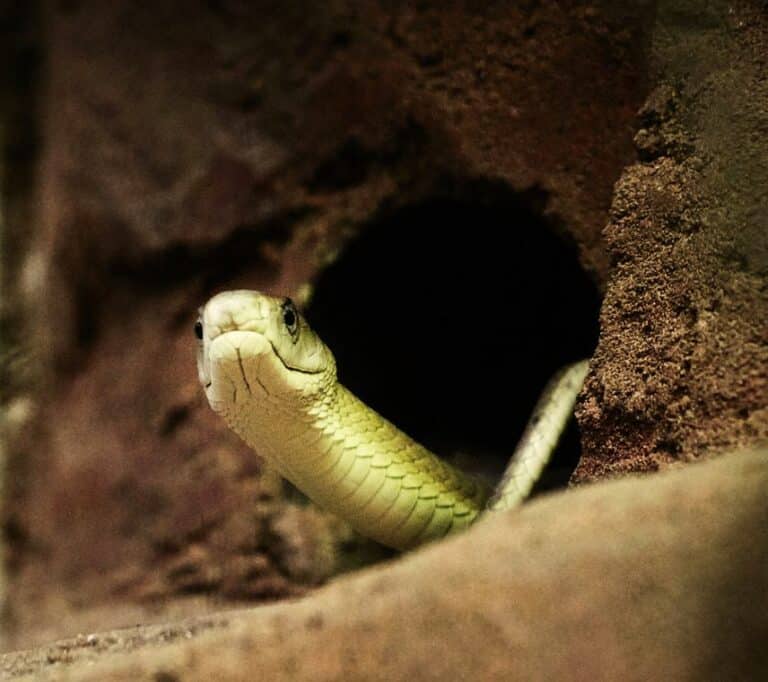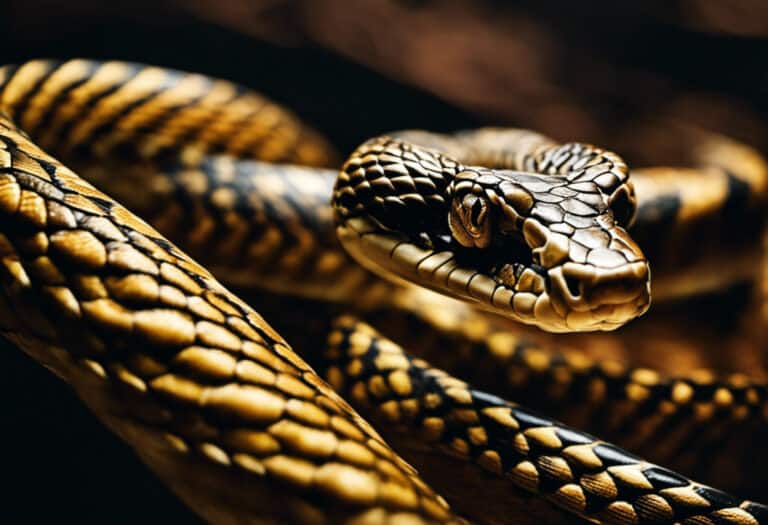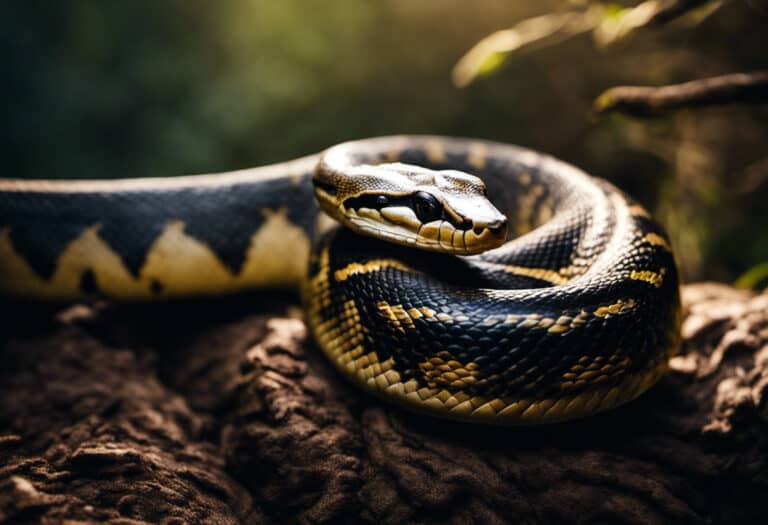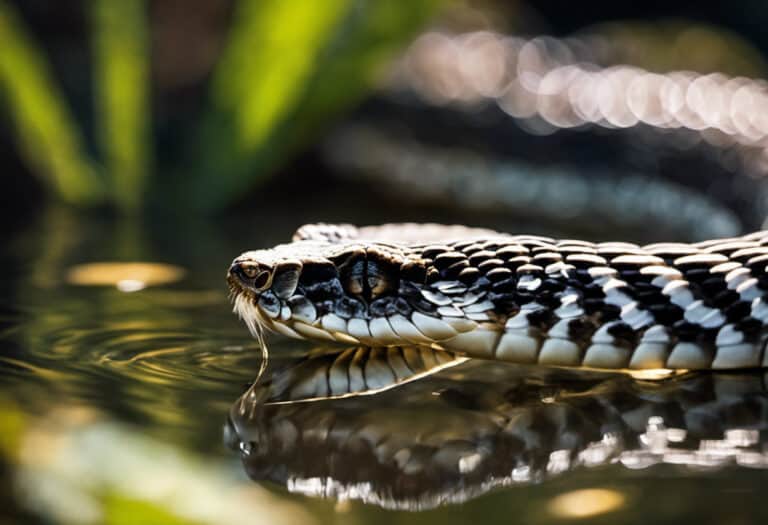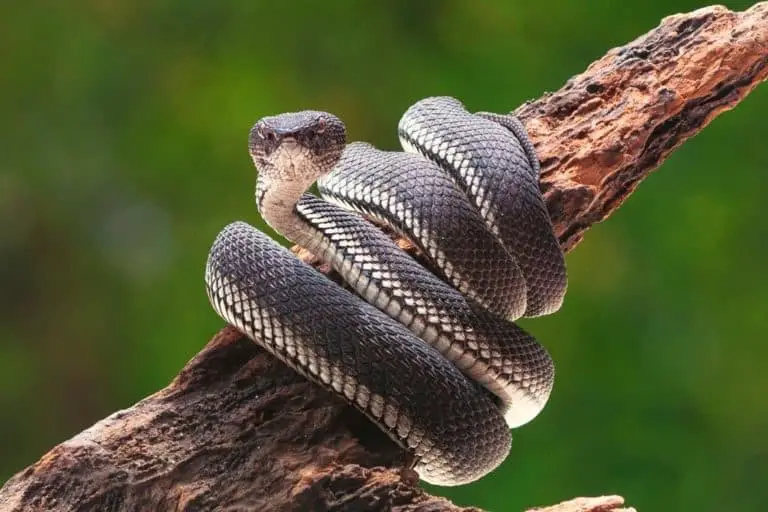Do Snakes Stay With Their Eggs?
Do you ever wonder if snakes stick around for their eggs?
Well, in the world of reptiles, snake egg laying and incubation behavior can vary quite a bit.
Some snakes diligently care for their eggs, while others lay them and leave them be.
This article explores the intriguing realm of snake reproduction, shedding light on the different strategies these elusive creatures employ.
From oviparous snakes that lay eggs to viviparous ones that give birth, you’ll discover the captivating behaviors of these slithery beings.
Key Takeaways
- Snakes generally do not stay with their eggs after laying, except for some viper species.
- Female Burmese pythons actively brood their eggs, using rhythmic contractions to produce heat and adjust temperature.
- Attention to detail and research is necessary for successful hatching in captivity.
- Factors such as maternal health and nutrition, housing conditions, and age of the parents can affect hatchability.
Snake Egg Laying and Incubation Behavior
Snakes that lay eggs typically don’t build or dig nests, except for King Cobras.
Unlike other snake species, King Cobras exhibit unique nesting behavior by constructing elaborate nests made of leaves, twigs, and other materials.
These nests provide protection and insulation for the eggs.
However, most snake species don’t exhibit such nesting behavior. After laying their eggs, snakes generally don’t care for them.
They don’t provide any form of parental care, such as incubating or protecting the eggs. Instead, the eggs are left to develop and hatch on their own. This lack of parental involvement is typical among the majority of snake species.
Snakes rely on external factors, such as temperature and humidity, to ensure successful incubation and hatching of their eggs.
Egg Producing Snake Species
When breeding pythons, it’s important to know that they typically lay 15 to 30 eggs in a clutch. These eggs are incubated for a specific period of time before hatching. The snake egg incubation period varies depending on the species, but it generally ranges from 60 to 90 days.
During this time, female snakes exhibit specific nesting behaviors to ensure the eggs’ survival. They may select specific nest sites with appropriate temperature and humidity levels. Some species, like the Burmese python, actively brood their eggs by using rhythmic contractions to produce heat and adjust temperature.
It’s important to understand these female snake nesting behaviors and provide the appropriate conditions in captivity to ensure successful hatching.
Incubator Requirements and Control
To ensure successful hatching, you should use an incubator that provides insulation against heat and humidity losses and stable temperature control. Whether you choose a homemade or commercial incubator, proper temperature control is crucial.
Homemade incubators can be cost-effective and customizable, but they may require more attention to maintain stable temperatures.
Commercial incubators, on the other hand, are designed with precise temperature control and insulation in mind.
The ideal temperature for snake eggs is typically between 82 to 88 degrees Fahrenheit, with pythons preferring the warmer end of the range.
It’s important to use a thermostat to regulate the temperature and ensure consistency.
Additionally, humidity levels should be monitored and maintained through proper substrate moisture.
By investing in a reliable incubator and carefully controlling temperature and humidity, you can increase the chances of successful hatching.
Pre-ovulatory Shed, Pregnancy, and Egg Development
During the pre-ovulatory shed, you should pair male and female snakes to increase the chances of successful ovulation and pregnancy. This is an important stage in the snake reproductive cycle, as it marks the beginning of potential pregnancy and egg development.
Pay attention to the following signs of snake pregnancy:
- Swelling in the mid- to hind-section of the snake’s body: This is a common sign of pregnancy and indicates that the female snake is carrying developing eggs.
- Shedding: Pregnant snakes typically shed about two weeks before laying. This shedding process prepares the snake for egg laying and is a reliable indicator of impending pregnancy.
Understanding these signs is crucial for successfully breeding snakes and ensuring the health and well-being of the mother and her eggs. By closely monitoring the reproductive cycle and recognizing these signs, you can increase the likelihood of a successful breeding outcome.
Hatching and Care of Hatchlings
After hatching, it’s important to provide separate housing for newly hatched snakes to prevent cannibalistic behavior. Snake handling and incubation techniques play a crucial role in ensuring the successful hatching and care of hatchlings.
When the snakes hatch from their eggs, it’s recommended to house them individually to prevent them from preying on each other. This is especially important for species like kingsnakes, as they’ve a tendency towards cannibalistic behavior. Proper snake handling during this time is essential to minimize stress and potential injuries.
Additionally, incubation techniques must be carefully monitored to maintain optimal temperature and humidity levels for the eggs. By following these practices, snake breeders and keepers can ensure the health and survival of their hatchlings.
Frequently Asked Questions
How Long Does It Take for Snake Eggs to Hatch?
Snake eggs typically take around 60 to 90 days to hatch, depending on the species. During this time, the embryos develop inside the eggs, receiving nutrition from the yolk. Snake egg incubation is a fascinating process to observe.
Do All Snake Species Lay the Same Number of Eggs?
Snake species do not lay the same number of eggs. Some lay 15-20 eggs, while others can lay up to 30. There are also snakes that do not lay eggs and give birth to live young.
Can Snake Eggs Be Artificially Incubated Without an Incubator?
Yes, snake eggs can be artificially incubated without an incubator. However, it is not recommended as natural incubation provides the optimal conditions for successful hatching.
How Long Do Pregnant Snakes Carry Their Eggs Before Laying Them?
Pregnant snakes carry their eggs for a specific duration before laying them, which varies depending on the species. Snake egg development is a fascinating process that involves the nurturing of the embryo until it’s ready to hatch.
What Factors Can Affect the Success of Snake Egg Hatching?
Factors affecting snake egg hatching success include maternal health, nutrition, housing conditions, and age of parents. Strategies for enhancing hatching rates include maintaining proper temperature and humidity levels, monitoring incubation parameters, and seeking advice from experienced breeders.
Conclusion
In conclusion, studying the egg-laying and incubation behaviors of snakes reveals the fascinating diversity of reproductive strategies employed by these remarkable creatures.
From the careful selection of nest sites to the precise control of incubator requirements, snakes exhibit remarkable adaptability in ensuring the survival of their offspring.
This underscores the importance of understanding and appreciating the intricacies of snake reproduction, shedding light on the remarkable abilities and instincts of these captivating reptiles.
As the saying goes, ‘Mother Nature is a master strategist,’ and snakes exemplify this with their unique reproductive behaviors.
